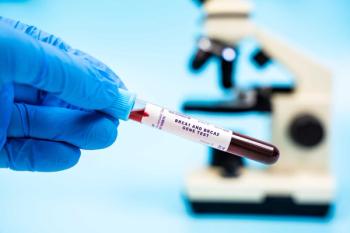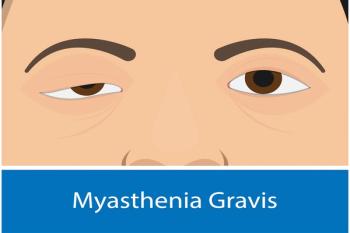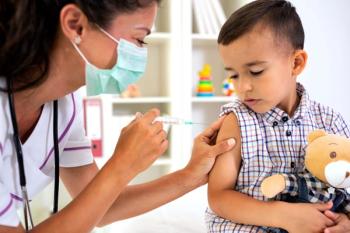
Suboptimal Care for PAH Persists Among Women
Key Takeaways
- Women with PAH face significant challenges in family planning, pregnancy, and childcare, with many relying on internet searches and social media for information.
- Negative perceptions of healthcare provider interactions were more common among patients with WHO functional class 1 disease.
Findings from surveys of women with pulmonary arterial hypertension (PAH) include that 20% of health care providers were viewed as dismissive because of the patient’s sex.
Improvements in disease awareness, communication between patients and their health care providers, and treatments for
The investigation encompassed childbearing women and women of childrearing age, 2 populations of patients who face higher rates of not only maternal mortality but also neonatal mortality.2-5 Most were from the US (n = 120), followed by the United Kingdom (n = 55) and Canada and Germany (n = 50 each).1 The mean (SD) age of PAH diagnosis was 34.6 (7.5) years, preceded by a mean age of symptom onset of 33.1 (8.7) years. At the time of the survey, the mean age was 40.1 (5.8) years.
To be included, a confirmed diagnosis of World Health Organization (WHO) Group 1 PAH was necessary—this is when the narrowing, thickening, or stiffening of the arteries in the lungs has become apparent, forcing the right side of the heart to work harder6—as was having visited a PAH specialist at least once in the previous year and being on treatment when screened for study participation. Individuals with severe comorbidities were excluded from the study.1 Focus areas of the study were family planning, pregnancy, and childcare, and the surveys took 45 minutes to administer.
Overall, 90% of survey respondents reported having biological children; 15%, children of a partner or spouse; and 7%, adopted children. Fifty-one percent primarily relied on internet searches for information on PAH-related pregnancy risks, while 46% sought out social media groups, 44% relied on resources from their health care provider, 38% consulted the scientific literature, and 20% asked for assistance from a patient advocate.
When the impact of a PAH diagnosis on patients and on health care providers’ attitudes was evaluated, 20% of participants viewed their health care providers as being because of the patient’s sex, 18% thought their providers were unaware of their PAH symptoms, 17% felt their providers were dismissive because of lifestyle factors, and 12% said their male health care providers were unable to relate to pregnancy-related grief.
The study authors also scrutinized patient education, emotional impact, and financial impact of a PAH diagnosis on patient and health care provider attitudes. They saw that 89% of patients were advised about pregnancy-related risks at diagnosis, 65% of patients who were advised against pregnancy grieved that having biological children was not an option, 98% expressed moderate to extreme grief about their inability to become pregnant or have biological children, and 43% felt they were shouldering a moderate or very high financial burden.
In addition, negative perceptions of health care provider interactions were more common among the individuals who had WHO functional class 1 disease when they took the survey compared with those who had WHO functional class 3 disease when they took the survey.
Limitations on these findings are that the nonrandom sampling could limit applicability to a broader patient population and biased results, survey participants may not have responded truthfully and instead said what society expected them vs relying on their own experiences, and memories of experiences may not be accurate.
“This study present novel findings on the unique perceptions and behaviors of women with PAH, especially around challenging interactions with health care systems and mechanisms to address these challenges, including risk of childbearing,” the study authors concluded. “These findings underscore the need for improved disease awareness, individualized patient-health care provider communication, and treatment.”
References
1. Thakur T, Preston LR, Mclaughlin VV, et al. Perceptions, attitudes and behaviors among women of childbearing and childrearing age with pulmonary arterial hypertension. Presented at: American Thoracic Society International Conference; May 16-21, 2025; San Francisco, CA. Poster 1020.
2. Afify H, Kong A, Bernal J, Elgendy IY. Pulmonary hypertension in pregnancy: challenges and solutions. Integr Blood Press Control. 2022:15:33-41. doi:10.2147/IBPC.S242242
3. Emmons-Bell S, Johnson C, Boon-Dooley A, et al. Prevalence, incidence, and survival of pulmonary arterial hypertension: a systematic review for the global burden of disease 2020 study. Pulm Circ. 2022;12(1):e12020. doi:10.1002/pul2.12020
4. Frost AE, Badesch DB, Barst RJ, et al. The changing picture of patients with pulmonary arterial hypertension in the United States: how REVEAL differs from historic and non-US Contemporary Registries. Chest. 2011;139(1):128-137. doi: 10.1378/chest.10-0075
5. Weiss BM, Zemp L, Seifert B, Hess OM. Outcome of pulmonary vascular disease in pregnancy: a systematic overview from 1978 through 1996. J Am Coll Cardiol. 1998;31(7):1650-1657. doi:10.1016/s0735-1097(98)00162-4
6. About pulmonary hypertension. Pulmonary Hypertension Association. 2020. Accessed May 27, 2025.
Newsletter
Stay ahead of policy, cost, and value—subscribe to AJMC for expert insights at the intersection of clinical care and health economics.













































